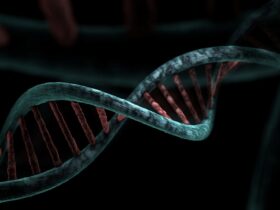In a study that has implications for both radiation and particle physics, researchers from Osaka University demonstrate, as predicted by Einstein’s theory, the relativistic contraction of an electric field created by fast-moving charged particles.
Special relativity, proposed by one of the most famous living physicists, Albert Einstein, has changed the way we think about the universe and how it works. Almost all of our cosmological knowledge rests on this theory, but until recently, a key part of it lacked experimental confirmation. Researchers at Osaka University’s Institute of Laser Engineering used ultrafast electro-optic measurements to show, for the first time, the electric field shrinking around an electron beam traveling at nearly the speed of light.
A “Lorentz transformation” combining space and time coordinates is required by Einstein’s special relativity theory in order to explain the motion of objects passing an observer at speeds close to the speed of light. He elaborated on why and how the resulting electric and magnetic field equations were internally consistent. Some of relativity’s effects have been demonstrated experimentally to a high degree of precision many times over, but the theory as a whole still has some secrets to reveal. One of these, the electric field contraction, is a paradox because it is modeled in electromagnetism as a phenomenon of special relativity.
The findings
This effect has now been experimentally proved for the first time, thanks to the efforts of a team from Osaka University. They were able to pull it off by tracking the Coulomb field round a high-energy electron beam produced by a linear particle accelerator as it moved through space and time. They were able to capture the electric field at unprecedented speeds by using ultrafast electro-optic sampling.
Time dilation trials as well as rest mass energy trials were cited as proof that the time and space Lorentz shifts and the energy and momentum Lorentz transformations, respectively, are real. Here, the group investigated the Lorentz transformation of electromagnetic potentials, which is analogous to the relativistic effect of electric-field contraction.
This study can support measurements of high-energy particle beams as well as other tests in high-energy physics due to the high degree of agreement between observations and Einstein’s special relativity projections for electromagnetism.












Leave a Reply